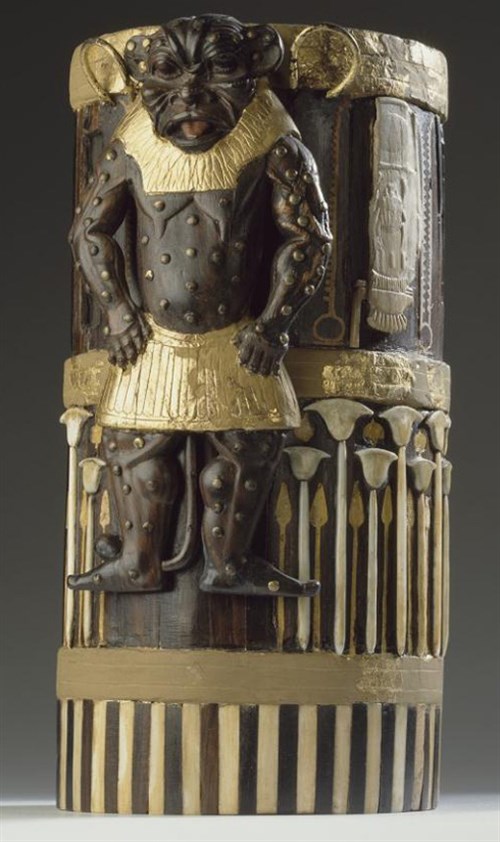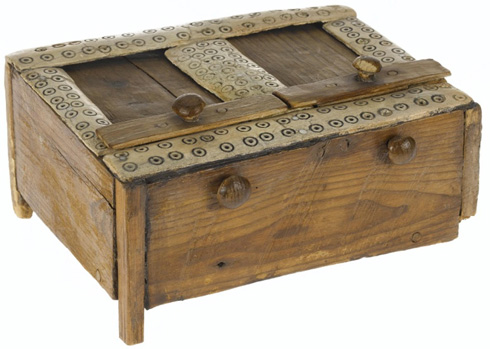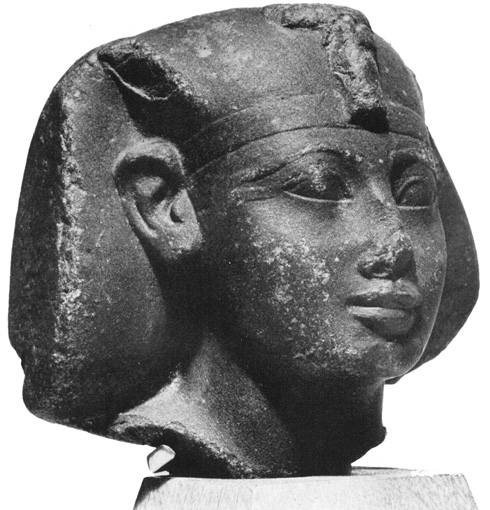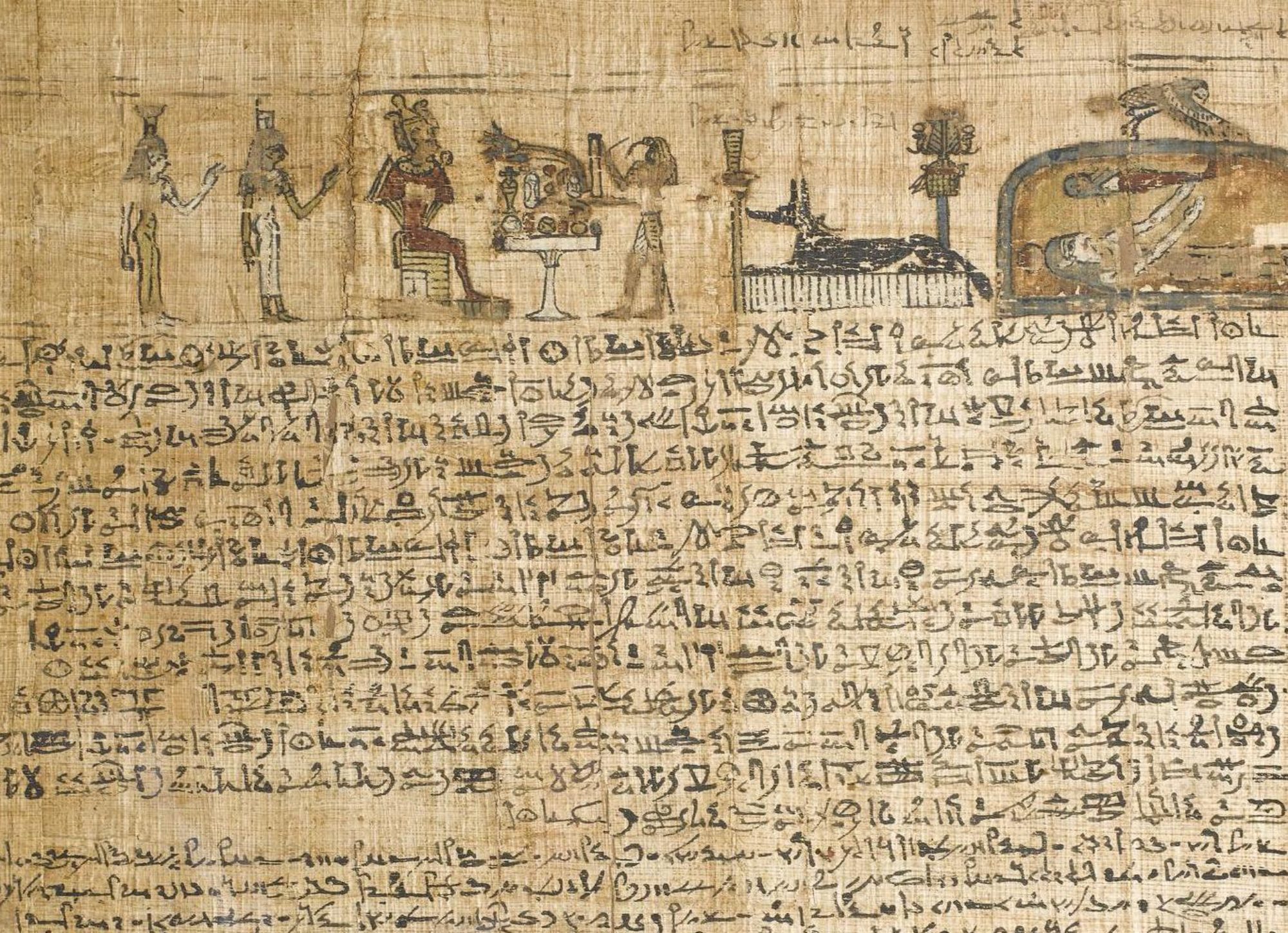This post is reblogged from my Object of the Month post for National Museums Scotland. All images are © National Museums Scotland:
This box of Pharaoh Amenhotep II, decorated with an image of the protective god Bes, is one of the finest examples of decorative woodwork to survive from ancient Egypt. It is thought to have been found by pioneering Scottish archaeologist Alexander Henry Rhind in the mid-19th century.

The fragmentary box is richly decorated with exotic materials from different areas of the ancient Mediterranean, signifying the extent of the king’s empire and its wealth. The main body is made of cedar wood, which was imported from Lebanon and valued for its quality, as suitable sources of wood were not abundant in Egypt.
The gold may have been mined in Egypt’s Eastern Desert or in Nubia (ancient Sudan). The box is overlaid with ivory plaques, made from either hippo or elephant tusk. Elephants were not native to Egypt and ivory was imported or given as tribute from further south in Africa. The veneers of ebony, a highly-prized dark hardwood, probably came from the land of Punt with whom the Egyptians traded. Our name for this wood, ‘ebony’ actually comes from the ancient Egyptian name for it, hebeny.

The box is a much more elaborate version of the types of wooden containers often found in ancient Egyptian tombs, other examples of which are on display in the Ancient Egypt gallery at the National Museum of Scotland. The decorative box of Amenhotep II was probably used to hold cosmetics or expensive perfumes. It likely belonged to the king himself or a member of his family, although it is also possible that he could have given it as a gift to an important high official. The closest parallels to such an elaborate wooden box as this are those found in the tomb of Tutankhamun (1336-1327 BC), and in the tomb of his grandparents Yuya and Tjuyu.
Amenhotep II
Amenhotep II was not originally the intended heir to the throne; he only became crown prince after his elder brother died, and he came to the throne at age 18. While still a prince, he served as a military commander, and he was renowned for his athletic prowess, much like his father. It was said that he once shot four arrows through four copper targets, each one palm thick, while riding on horseback.
The stela (large inscribed stone slab) of Amenhotep II at Giza tells of his strength and endurance:
Strong of arms, untiring when he took the oar, he rowed at the stern of his falcon-boat as the stroke-oar for two hundred men. Pausing after they had rowed half a mile, they were weak, limp in body, and breathless, while his majesty was strong under his oar of twenty cubits in length. He stopped and landed his falcon-boat only after he had done three miles of rowing without interrupting his stroke. Faces shone as they saw him do this.
Amenhotep II led numerous military campaigns over the course of his reign, but later in his reign he seems to have achieved peace with Egypt’s neighbours.


The protective household god
The main figure depicted on the decorative box of Amenhotep II is a protective god and household guardian known as Bes. A number of similar such deities are known from ancient Egypt, but in the absence of an inscription identifying the figure specifically, he is usually referred to as Bes.
Bes is depicted as a dwarf with lion-like features and sometimes wears a Nubian-style headdress with feathers. In ancient Egypt, dwarfs were thought to be emblematic of good fortune and many such individuals worked as entertainers; they were also considered to be very skilful, working as expert craftsmen, or even as important state officials to the king.
As a joyful symbol of good luck, Bes is sometimes shown dancing and playing the tambourine, while his protective role is evident from his rather fearsome appearance, which was intended to scare off potential dangers and evil spirits. He is often depicted brandishing knives and sticking out his tongue. He is somewhat comparable to more modern European gargoyles whose presence on churches was intended to ward off evil. Bes’ popularity spread throughout the ancient Mediterranean and depictions of him have been found in Cyprus, Assyria, and elsewhere.

As a household guardian and protector of the family, Bes frequently appears as a decorative and protective element on amulets, and household items such as headrests and furniture. Another wooden figure of Bes in the National Museums Scotland collection probably comes from a piece of furniture, possibly from the back of a chair.
Although he is generally thought of as a domestic god, worshipped in the home, as opposed to one of the state gods, such as the sun god Ra, who was worshipped in huge temples built by the pharaohs, Bes was obviously still considered worthy enough to feature on a household item in the palace of a king.
A rich symbolism
The box of Amenhotep II features a number of other decorative elements in addition to the main figure of the god Bes. The oval-shaped ivory plaques depict a name of Amenhotep II within a cartouche, an oval used to encircle royal names, which symbolised eternity. Ancient Egyptian names generally took the form of phrases that described their owner in positive terms, often in relation to a god or goddess.
An Egyptian king generally had five names: his birth name, plus four new names which he adopted at his coronation in order to emphasise his divine right to rule and convey a kind of mission statement for his reign. Two of the king’s names were typically written in cartouches, the birth name and the throne name.
Only Amenhotep II’s throne name, Aakheperure, appears on the box, but it is clear that there are several inlays missing which would have contained his birth name, Amenhotep. Aakheperure means ‘Great are the manifestations of the sun god Ra’, while Amenhotep means ‘the god Amun is satisfied’.
Together all of the decoration on the box served to ensure a long and successful reign for King Amenhotep II.
